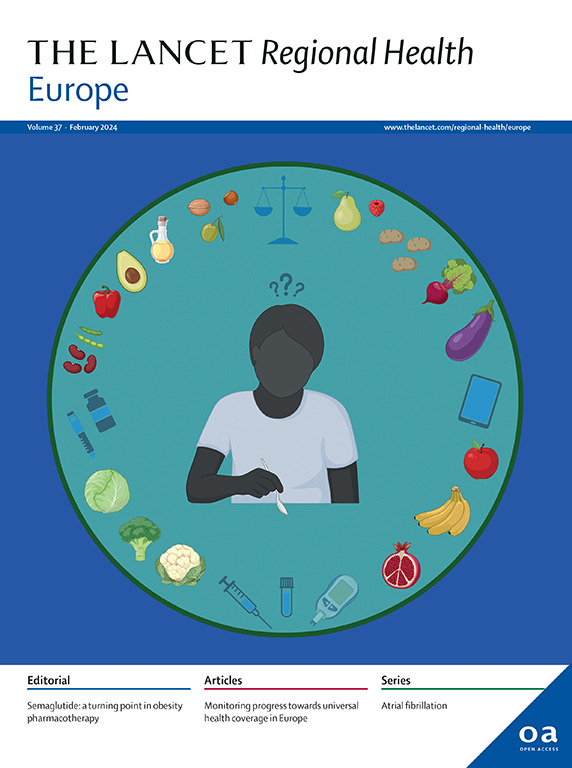Maternal and neonatal outcomes of pregnancies after metabolic bariatric surgery: a retrospective population-based study
IF 13.6
Q1 HEALTH CARE SCIENCES & SERVICES
引用次数: 0
Abstract
Background
The incidence of post metabolic bariatric surgery (BS) pregnancies is rising. Previous studies provided conflicting results regarding the risk of prematurity, stillbirth, perinatal death and the optimal time from BS to conception. This study examined maternal and neonatal outcomes of post-BS pregnancies and influencing factors.
Methods
Nationwide retrospective study of all post-BS pregnancies in France from January 1st 2013 to December 31st 2022. We compared 55,941 post-BS pregnancies with 223,712 controls matched on delivery date, parity, age, obesity, hypertension, diabetes, and socio-economic status (1:4 ratio) using generalized estimating equations. We also compared 11,777 post-BS pregnancies with 11,777 pre-BS pregnancies in the same women, using conditional logistic regression. Maternal outcomes included gestational hypertension, preeclampsia, and gestational diabetes. Neonatal outcomes included small-for-gestational-age (SGA), prematurity, stillbirth, and perinatal death. We tested for interactions with BS type, BS to pregnancy time interval and malnutrition.
Findings
Post-BS pregnancies were associated with reduced risk of gestational hypertension (odds ratio [OR] 0.57 [95% CI 0.53–0.62]), preeclampsia (OR 0.59 [0.55–0.64]), and gestational diabetes (OR 0.64 [0.62–0.66]) as compared with control. Similar but stronger risk reductions were observed compared with pre-BS pregnancies. Risk of SGA was increased (OR 1.74 [1.68–1.79]) as compared with controls and pre-BS pregnancies (OR 1.88 [1.64–2.16]). Risk of prematurity was increased (OR 1.27 [1.22–1.31]) as compared with controls but not pre-BS pregnancies (OR 0.95 [0.85–1.06]). Compared with controls, risk of stillbirth was increased (OR 1.2 [1.06–1.35]), mediated by SGA, as was perinatal death (OR 1.5 [1.13–1.99]), mediated by both prematurity and SGA. Increased SGA risk compared to controls was higher with malnutrition (OR: 2.38 [1.96, 2.88], pinteraction <0.0001), with <6 months (OR: 1.95 [1.72, 2.21], pinteraction = 0.01) or 6–12 months between BS and pregnancy (OR: 1.86 [1.70, 2.04], pinteraction = 0.02) and with gastric bypass (OR: 1.88 [1.77–2.00], pinteraction = 0.027). Increased prematurity risk compared to controls was higher with malnutrition (2.45 [1.99, 3.00], pinteraction <0.0001) and gastric bypass (OR: 1.46 [1.36–1.57], pinteraction = 0.0003).
Interpretation
Post-BS compared with pre-BS or control pregnancies were associated with reduced risk of maternal adverse outcomes but increased risk of neonatal adverse events. The risks of SGA and prematurity are higher with shorter intervals between BS and conception, gastric bypass, and malnutrition. Post-BS pregnancies could be considered high risk, requiring close nutritional and obstetrical monitoring.
Funding
Support from INSERM and the French Ministry of Health (Messidore 2022 n°97).
求助全文
约1分钟内获得全文
求助全文
来源期刊

Lancet Regional Health-Europe
Multiple-
CiteScore
19.90
自引率
1.40%
发文量
260
审稿时长
9 weeks
期刊介绍:
The Lancet Regional Health – Europe, a gold open access journal, is part of The Lancet's global effort to promote healthcare quality and accessibility worldwide. It focuses on advancing clinical practice and health policy in the European region to enhance health outcomes. The journal publishes high-quality original research advocating changes in clinical practice and health policy. It also includes reviews, commentaries, and opinion pieces on regional health topics, such as infection and disease prevention, healthy aging, and reducing health disparities.
 求助内容:
求助内容: 应助结果提醒方式:
应助结果提醒方式:


